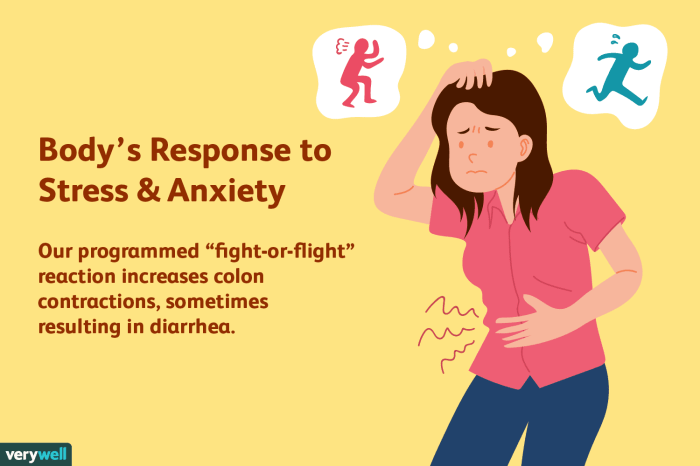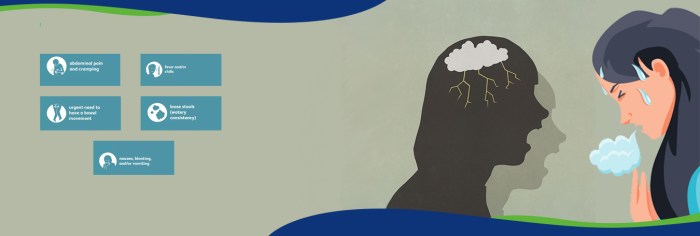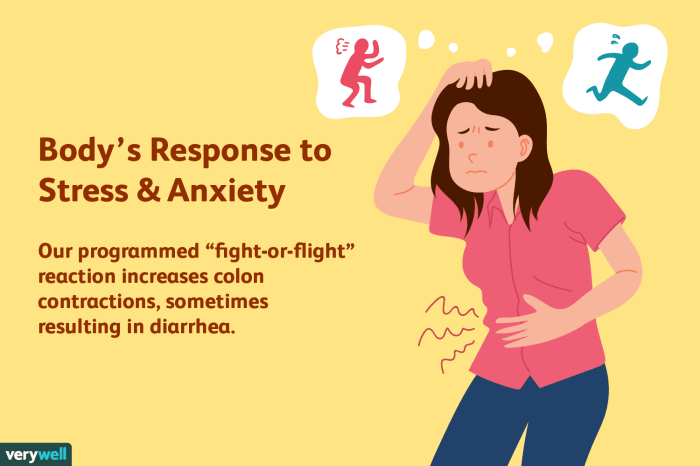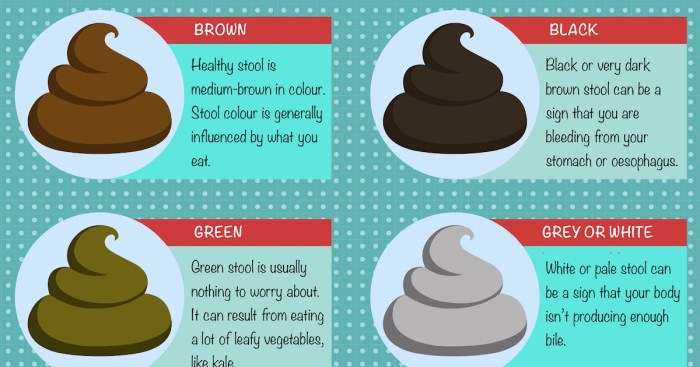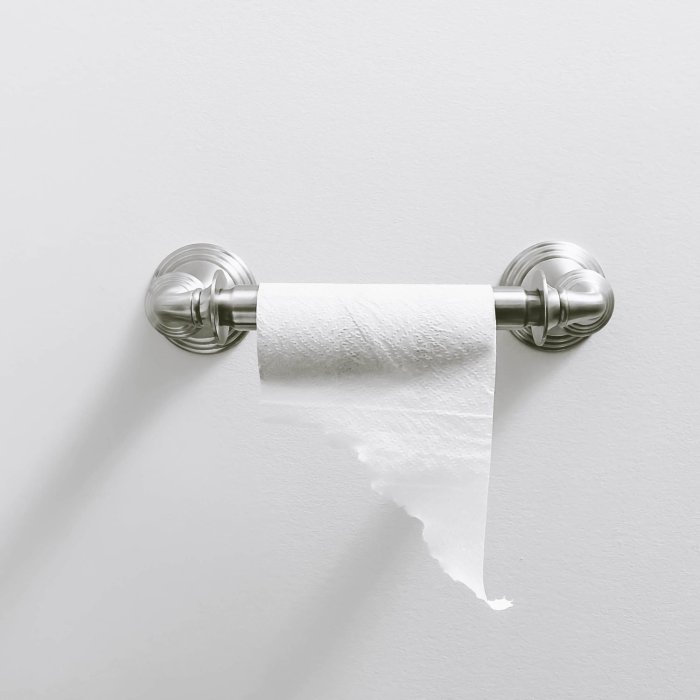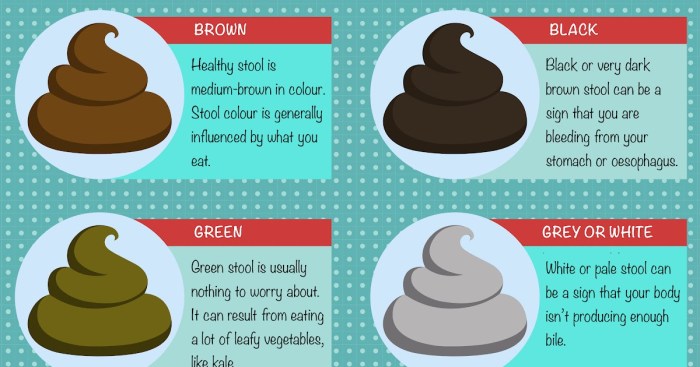Undigested food in stool sets the stage for this enthralling narrative, offering readers a glimpse into the complex world of digestive health. We’ll explore the various causes, symptoms, dietary factors, medical conditions, and even the diagnostic process related to this common issue. From the crucial role of enzymes to the impact of stress, this comprehensive guide will equip you with a deeper understanding of undigested food in stool.
This exploration delves into the potential causes of undigested food in your stool, ranging from simple dietary choices to more serious underlying medical conditions. We’ll examine how different foods affect digestion, the role of enzymes and gut bacteria, and the potential connection between specific symptoms and potential problems. The information will cover the diagnosis process, potential treatments, and practical steps you can take to prevent this issue in the future.
Causes of Undigested Food in Stool

Finding undigested food particles in your stool can be a sign that your digestive system isn’t functioning optimally. This isn’t necessarily a serious problem, but it can indicate various underlying issues. Understanding the potential causes is key to addressing the problem effectively. It’s always best to consult with a healthcare professional for accurate diagnosis and personalized recommendations.Digestive health relies on a complex interplay of processes.
From mechanical breakdown in the mouth to the precise chemical reactions in the small intestine, every step is crucial. Difficulties at any stage can lead to undigested food passing through the system, impacting nutrient absorption and overall well-being.
Potential Digestive Issues
Several digestive issues can contribute to undigested food in stool. These range from mild dietary indiscretions to more serious conditions requiring medical attention. Careful observation and a thorough understanding of your body’s responses are vital in identifying the root cause.
- Malabsorption syndromes: Conditions like celiac disease, Crohn’s disease, and cystic fibrosis can interfere with the absorption of nutrients. This can lead to undigested food particles being passed through the intestines. Symptoms can include bloating, cramping, diarrhea, and weight loss.
- Pancreatic insufficiency: The pancreas produces enzymes crucial for digesting fats, proteins, and carbohydrates. Insufficient enzyme production or function can result in maldigestion. This often manifests as fatty stools and symptoms such as abdominal pain and discomfort. Chronic pancreatitis, cystic fibrosis, and certain medications can contribute to this.
- Enzyme deficiencies: Specific enzyme deficiencies, such as lactase deficiency (leading to lactose intolerance), can prevent the breakdown of certain food components. This can cause digestive distress, including bloating, gas, and diarrhea.
- Small intestinal bacterial overgrowth (SIBO): An excessive amount of bacteria in the small intestine can disrupt normal digestion, hindering nutrient absorption and leading to undigested food in the stool. Symptoms can include bloating, abdominal pain, diarrhea, and gas.
- Gastrointestinal motility disorders: Problems with the movement of food through the digestive tract, such as delayed gastric emptying or irritable bowel syndrome (IBS), can cause food to remain undigested longer. IBS, for example, often leads to alternating periods of constipation and diarrhea, with symptoms such as abdominal pain and cramping.
- Food intolerances: Certain foods may trigger an immune response, leading to inflammation and discomfort. Food intolerance can manifest as bloating, gas, diarrhea, and undigested food in stool. Examples include gluten intolerance and fructose malabsorption.
- Inflammatory bowel disease (IBD): Conditions like Crohn’s disease and ulcerative colitis cause inflammation in the digestive tract. This inflammation can interfere with digestion and absorption, resulting in undigested food in the stool.
Role of Digestive Enzymes
Digestive enzymes are proteins that catalyze the breakdown of food into smaller molecules that can be absorbed by the body. Different enzymes target different food types. A deficiency in these enzymes can lead to incomplete digestion.
Sometimes, undigested food shows up in your stool, which can be a sign of various digestive issues. It’s a bit like how vaping can damage your lungs, making it hard for them to heal. Learning more about the possible causes and treatments for undigested food in stool can be a helpful first step. To understand how vaping can affect lung health, check out this resource on can my lungs heal after vaping.
Ultimately, paying attention to your body’s signals, like what’s in your stool, can help you identify potential problems early on.
- Amylase: Breaks down carbohydrates. A deficiency can result in difficulty digesting starchy foods.
- Protease: Breaks down proteins. A deficiency can cause problems digesting meat, beans, and other protein-rich foods.
- Lipase: Breaks down fats. A deficiency can lead to fatty stools and difficulty digesting fats from dairy products, nuts, and oils.
Function of the Digestive Tract
The digestive tract is a complex system with specific functions at each stage. Disruptions in any part can cause undigested food to be eliminated.
- Mouth: Mechanical breakdown of food through chewing.
- Stomach: Chemical breakdown of food using acids and enzymes.
- Small intestine: Absorption of nutrients. Malfunction can lead to malabsorption.
- Large intestine: Absorption of water and electrolytes. Problems here can affect stool consistency and volume.
Difficult-to-Digest Foods
Different foods require varying levels of digestive effort. Some are inherently more challenging to break down.
| Food Type | Reason for Difficulty |
|---|---|
| Legumes (beans, lentils) | High fiber content, complex carbohydrates that require multiple enzymes for breakdown. |
| Dairy products (milk, cheese) | Lactose, a sugar found in dairy, requires the enzyme lactase for digestion. Lactase deficiency hinders lactose digestion. |
| High-fat foods | Require lipase for breakdown; excess fat can slow down digestion. |
| Raw vegetables | High fiber content, cell walls that need mechanical breakdown and enzymatic activity for digestion. |
| Processed foods | Often contain ingredients that are difficult to digest, or contain artificial additives that can cause issues. |
Symptoms Associated with Undigested Food in Stool

Beyond the obvious presence of undigested food in stool, a range of other symptoms often accompany this digestive issue. These symptoms can vary significantly in severity, reflecting the underlying cause and the extent of the digestive dysfunction. Understanding these associated symptoms is crucial for accurate diagnosis and effective management.The severity of symptoms related to undigested food in stool often correlates directly with the degree of digestive impairment.
Mild cases might present with only subtle discomfort, while more severe cases can lead to significant distress and impact daily life. Factors like the type of undigested food, the individual’s overall health, and the presence of other co-occurring conditions can all influence the symptom profile.
Common Accompanying Symptoms
Identifying the presence of undigested food in stool is a significant indicator, but it’s essential to consider other potential symptoms that might be present. These can include abdominal discomfort, bloating, cramping, and a feeling of fullness, even after eating small meals. In more severe cases, nausea, vomiting, or even weight loss can occur.
Correlation Between Symptoms and Potential Causes
The following table illustrates potential connections between specific symptoms and possible underlying digestive issues contributing to undigested food in stool. This information is not exhaustive, and should not be used for self-diagnosis. Consult a healthcare professional for proper evaluation.
| Symptom | Potential Underlying Cause | Explanation |
|---|---|---|
| Abdominal pain/cramping | Irritable Bowel Syndrome (IBS), Inflammatory Bowel Disease (IBD), or food intolerance | These conditions can cause inflammation and spasms in the digestive tract, leading to pain. |
| Bloating and fullness | Malabsorption syndromes (e.g., celiac disease), slow motility disorders, or excessive gas production | If the body isn’t properly absorbing nutrients, or if the digestive system is moving food too slowly, bloating and fullness can result. |
| Nausea and vomiting | Gastroenteritis, food poisoning, or severe cases of digestive dysfunction | These symptoms often indicate a more acute and potentially serious issue affecting the digestive system. |
| Weight loss | Malabsorption syndromes, chronic inflammation, or other underlying health conditions | If the body is not absorbing nutrients properly, weight loss can occur. |
| Diarrhea | Food intolerance, infections, or some types of digestive disorders | Frequent loose stools can be a symptom of various digestive problems, and undigested food in stool could be a part of that pattern. |
Management Approaches
Various approaches exist for managing symptoms associated with undigested food in stool. These approaches often involve a combination of dietary modifications, lifestyle changes, and potentially medical interventions.
- Dietary Modifications: A crucial step in managing symptoms is adjusting your diet. This might involve eliminating certain foods known to trigger digestive issues, such as high-fat foods, spicy foods, or foods containing specific allergens. A food diary can be helpful in tracking which foods worsen symptoms.
- Lifestyle Changes: Regular exercise, stress management techniques, and sufficient hydration are also beneficial. Stress can exacerbate digestive problems, and maintaining a healthy lifestyle can contribute to a healthier digestive system.
- Medical Interventions: In more severe cases, medical interventions such as medication, dietary supplements, or even surgery might be necessary to address underlying conditions causing undigested food in stool. This is a decision that must be made in consultation with a healthcare professional.
Dietary Factors and Undigested Food
Our diets play a crucial role in how well our bodies process food. The types of foods we consume, the portion sizes, and even the timing of our meals can all impact digestion. Understanding these factors can help us identify potential causes of undigested food in our stool and make informed choices for better digestive health.Dietary choices significantly influence the digestive process.
Some foods are inherently more challenging to digest than others, leading to undigested remnants appearing in the stool. This is particularly true for those with pre-existing digestive conditions or sensitivities. Additionally, consistent habits like meal frequency and timing, along with adequate hydration, play a substantial role in the efficiency of digestion.
Impact of Different Food Types
Various dietary components can affect the ease with which our bodies break down food. Certain foods are naturally high in fiber, which while beneficial for overall health, can also be challenging for some individuals to fully digest. Likewise, consuming excessive amounts of certain foods, like fatty or processed items, can overwhelm the digestive system and contribute to the presence of undigested material in the stool.
Foods Often Problematic for Digestion
Foods that are frequently problematic for digestion often contain complex carbohydrates, high levels of fat, or both. Examples include:
- Cruciferous vegetables (broccoli, cauliflower, cabbage): These vegetables contain complex carbohydrates that can be difficult for some individuals to digest, potentially leading to gas and bloating, and undigested remnants in the stool. The presence of indigestible fiber compounds contributes to this challenge.
- Legumes (beans, lentils, peas): These foods contain complex carbohydrates and fiber that require specific digestive enzymes and time to break down. Their indigestible components can cause discomfort and leave undigested remnants in the stool, particularly if consumed in large quantities or without adequate preparation.
- Fatty foods: Foods high in fat take longer to digest, potentially causing delays in the digestive process. This can lead to the accumulation of undigested fat in the stool, which can appear greasy or oily. For instance, consuming large amounts of fried foods or high-fat dairy products can potentially lead to visible undigested fat in stool.
- Processed foods: These foods often contain additives and ingredients that can be challenging for the digestive system to break down. These additives can hinder digestive enzymes from properly processing the food. Examples include certain types of packaged snacks or fast food items.
Eating Habits and Meal Timing
Eating habits and meal timing significantly influence digestion. Consuming large meals too rapidly can overwhelm the digestive system, making it harder to break down food completely. Eating regularly and at consistent times helps the body establish a rhythm for digestion, promoting optimal function.
Importance of Hydration
Adequate hydration is essential for optimal digestion. Water aids in the movement of food through the digestive tract and helps to break down nutrients. Dehydration can lead to constipation and make it more difficult for the body to digest food completely. Drinking enough water throughout the day is crucial for maintaining a healthy digestive system. Symptoms of dehydration can include decreased bowel movements and potentially undigested food in the stool.
High-Fiber Foods and Stool Consistency
High-fiber foods are essential for a healthy digestive system, but their impact on stool consistency and undigested material varies. Here’s a table summarizing potential effects:
| Food | Fiber Type | Potential Effect on Stool Consistency | Potential for Undigested Material |
|---|---|---|---|
| Fruits (apples, pears) | Pectin, cellulose | Softer, bulkier stool | Moderate, depends on individual digestion |
| Vegetables (broccoli, cauliflower) | Fiber, cellulose | Bulkier stool | Moderate to high, especially for individuals with digestive sensitivities |
| Legumes (beans, lentils) | Fiber, complex carbs | Bulkier stool | High, often requires proper preparation |
| Whole grains (brown rice, oats) | Fiber, complex carbs | Bulkier stool | Moderate, depends on individual digestion |
Medical Conditions Related to Undigested Food
Undigested food in your stool can be a subtle but significant clue to underlying digestive issues. While occasional occurrences might be harmless, persistent undigested food particles often signal a problem with the body’s ability to break down and absorb nutrients effectively. This can stem from various medical conditions affecting different stages of digestion.The digestive system is a complex network of organs working in harmony to process food.
Any disruption in this intricate process, from inadequate enzyme production to impaired gut motility, can lead to undigested food remnants in the stool. Understanding these disruptions is crucial in identifying potential health concerns and seeking appropriate medical intervention.
Specific Digestive System Diseases
Numerous diseases can impact the efficiency of digestion, resulting in undigested food in the stool. These conditions often affect the intestines, pancreas, or gallbladder, interfering with the normal breakdown and absorption of nutrients.
- Malabsorption Syndromes: Conditions like celiac disease, Crohn’s disease, and cystic fibrosis can hinder the small intestine’s ability to absorb nutrients properly. The resulting malabsorption can manifest as undigested food particles in the stool, along with other symptoms like weight loss and fatigue. Celiac disease, for example, is an autoimmune disorder triggered by gluten, leading to damage in the lining of the small intestine, impeding nutrient absorption.
- Pancreatic Insufficiency: The pancreas produces enzymes crucial for digesting fats, proteins, and carbohydrates. Conditions such as chronic pancreatitis or cystic fibrosis can impair pancreatic function, leading to inadequate enzyme production. This insufficiency results in undigested fats and proteins appearing in the stool. Individuals with pancreatic insufficiency may experience significant weight loss and fatty, foul-smelling stools.
- Gallbladder Issues: The gallbladder stores bile produced by the liver. Gallstones can obstruct the bile ducts, hindering the delivery of bile to the small intestine. This can lead to undigested fats in the stool, as bile plays a critical role in fat digestion. Symptoms often include pain in the upper right abdomen and jaundice.
Gut Bacteria Imbalance
The gut microbiome, consisting of trillions of bacteria, plays a significant role in digestion. A healthy balance of these microorganisms is essential for optimal digestion. Imbalances in the gut microbiome, known as dysbiosis, can lead to undigested food in the stool.
- Dysbiosis: Dysbiosis occurs when the balance of beneficial and harmful bacteria in the gut is disrupted. This disruption can stem from antibiotic use, dietary changes, or underlying medical conditions. A shift in gut flora can impair the breakdown of certain food components, leading to undigested food particles in the stool.
- Examples: A person taking antibiotics might experience temporary dysbiosis, disrupting the normal bacterial community and potentially leading to temporary undigested food in the stool. This issue is often temporary and resolves itself as the gut flora re-establishes balance.
When Undigested Food is a Sign of a Larger Issue
Undigested food in the stool should not be taken lightly, especially if it persists. It can be a symptom of more significant digestive disorders that require prompt medical attention.
Seeing undigested food in your stool can be a bit concerning. It could point to a digestive issue, but sometimes, dietary choices like consuming excessive amounts of turmeric, a spice often touted for its health benefits, might also play a role. If you’re wondering how much turmeric is too much, check out this helpful resource: how much turmeric is too much.
While turmeric is generally safe, excessive intake could contribute to the presence of undigested food in your stool, or exacerbate existing digestive problems.
- Persistent Symptoms: If undigested food is present in the stool regularly, it warrants investigation. This is particularly true if accompanied by other symptoms such as weight loss, abdominal pain, bloating, or changes in bowel habits.
- Impact: These symptoms can indicate a more serious underlying condition. Persistent undigested food might signify a malabsorption disorder or another significant digestive issue. Prompt medical attention is crucial in such cases.
Summary Table of Digestive Disorders
| Digestive Disorder | Potential Impact on Stool Composition |
|---|---|
| Celiac Disease | Undigested carbohydrates, proteins, and fats; loose, fatty stools |
| Crohn’s Disease | Undigested proteins and fats; loose, bloody stools |
| Pancreatic Insufficiency | Undigested fats; fatty, foul-smelling stools |
| Gallstones | Undigested fats; fatty, possibly pale stools |
| Dysbiosis | Undigested food; variable stool consistency |
Diagnosis and Evaluation
Undigested food in stool can be a symptom of various underlying digestive issues. Accurate diagnosis hinges on a comprehensive evaluation, combining patient history, physical examination, and specialized tests to pinpoint the root cause. This process helps guide appropriate treatment strategies and improve patient outcomes.A thorough investigation into the cause of undigested food in stool involves a multi-faceted approach.
This includes careful consideration of the patient’s medical history, dietary habits, and any associated symptoms. The physical examination, while not directly revealing the presence of undigested food, will provide crucial context about overall health and potential clues regarding the digestive system. Subsequent tests help assess the functionality of the digestive organs and the efficiency of nutrient absorption.
Diagnostic Methods
The identification of undigested food in stool is a critical first step. This observation, however, does not provide a specific diagnosis. A complete understanding of the digestive process necessitates a combination of methods to pinpoint the precise cause. These include a detailed patient history, physical examination, and specific tests designed to assess digestive function.
Patient History and Dietary Factors
A detailed patient history is crucial for determining potential dietary triggers and associated medical conditions. This includes questions about the patient’s diet, any recent dietary changes, the duration of the symptoms, and any other related health issues. Dietary factors play a significant role in digestion. For example, a sudden increase in high-fiber foods might cause temporary issues with digestion, whereas a long-term deficiency in digestive enzymes could lead to more severe problems.
Physical Examination
During a physical examination, the healthcare provider will assess the patient’s overall health, paying particular attention to the abdomen. The examination might involve palpating the abdomen to feel for any abnormalities, such as masses or tenderness. A thorough evaluation of the abdomen can reveal clues about potential digestive problems. For instance, persistent bloating or tenderness might indicate issues like irritable bowel syndrome or inflammation of the intestines.
This examination helps to narrow down the potential causes and guide subsequent diagnostic tests.
Stool Analysis
Analyzing stool samples is a crucial aspect of diagnosing digestive issues. This involves microscopic examination of the stool to look for the presence of undigested food particles, parasites, or other abnormalities. Specific tests may focus on identifying the type and amount of undigested material, aiding in the determination of the underlying cause.
Digestive Function Tests
Various tests assess the efficiency of different stages of the digestive process. These tests might include blood tests to measure levels of digestive enzymes, or tests to evaluate the absorption of specific nutrients. For instance, a test measuring lactase levels can help diagnose lactose intolerance, a common cause of undigested food in stool.
Comparison of Diagnostic Tests
| Test | Description | Accuracy | Limitations |
|---|---|---|---|
| Stool Microscopy | Examines stool for undigested food particles, parasites, and other abnormalities. | Moderate | May not identify subtle or complex issues; requires trained personnel. |
| Blood Tests (Enzyme Levels) | Measures levels of digestive enzymes in the blood. | Moderate to High | May not always reflect the actual digestive function. |
| Endoscopy (e.g., Colonoscopy) | Direct visualization of the digestive tract using a camera. | High | Can be invasive and may not be suitable for all patients. |
| Breath Tests | Measures gases in the breath to assess nutrient absorption. | Moderate to High | Specific to certain types of issues; can be influenced by diet. |
This table provides a general overview of diagnostic tests and their characteristics. Accuracy varies depending on the specific test and the nature of the underlying issue. It is important to note that these tests are not always conclusive and may require further investigations.
Management Strategies and Treatments
Dealing with undigested food in your stool can be frustrating, but it’s often manageable with the right approach. Understanding the underlying causes and implementing appropriate strategies are key to improving digestion and overall well-being. This section will explore various management strategies, including dietary modifications, treatment options for medical conditions, and medication considerations.
Dietary Modifications for Improved Digestion
Dietary changes play a crucial role in managing digestive issues. The foods we consume directly impact our digestive system’s ability to break down and absorb nutrients. Adjusting your diet can significantly reduce the amount of undigested food in your stool.
- Increasing Fiber Intake Gradually: Fiber is essential for healthy digestion. However, increasing fiber too quickly can lead to gas and bloating. Gradually increase your fiber intake by incorporating high-fiber foods like fruits, vegetables, and whole grains into your diet. Start with small portions and gradually increase the amount as your body adjusts. For example, switching from white rice to brown rice can improve digestion.
- Hydration is Key: Drinking enough water is vital for optimal digestion. Water helps to soften stool and facilitates the movement of food through the digestive tract. Aim for 8 glasses of water a day, or more depending on your activity level and climate. Adequate hydration can make a significant difference in stool consistency and prevent constipation.
- Avoiding Trigger Foods: Some foods can irritate the digestive system, causing discomfort and potentially leading to undigested food in stool. Identify your trigger foods through careful observation and elimination. If you suspect a particular food is causing issues, try eliminating it from your diet for a few weeks and observe if symptoms improve. Common culprits include highly processed foods, spicy foods, and excessive amounts of certain fats.
Treatment Options for Underlying Medical Conditions
Various medical conditions can contribute to undigested food in stool. Addressing the underlying condition is essential for effective management. Treatment options will vary depending on the specific diagnosis.
- Addressing Malabsorption Disorders: Conditions like celiac disease or Crohn’s disease can hinder nutrient absorption, leading to undigested food in stool. Treating these disorders often involves a combination of dietary restrictions, medications, and possibly surgery. For example, a person with celiac disease needs to strictly avoid gluten-containing foods.
- Managing Irritable Bowel Syndrome (IBS): IBS can cause various digestive symptoms, including undigested food in stool. Management strategies often involve dietary modifications, stress management techniques, and medication to control symptoms. A registered dietitian can help develop a tailored dietary plan for IBS.
- Treating Pancreatic Insufficiency: The pancreas plays a vital role in digestion by producing enzymes necessary for breaking down food. If the pancreas is not producing enough enzymes, undigested food may pass through the digestive tract. Treatment for pancreatic insufficiency typically involves enzyme replacement therapy.
Medication Considerations
Medications can sometimes contribute to digestive issues, including undigested food in stool. If you suspect a medication is causing problems, discuss it with your doctor. They can help determine if an alternative medication or dosage adjustment is appropriate.
Sometimes, seeing undigested food in your stool can be a sign of something amiss with your digestion. It could be a simple dietary issue, or, if it’s accompanied by other symptoms, it might point to something more serious. This could be connected to why you’re feeling under the weather, like having a summer cold, and you might want to check out this article on why do i have a summer cold.
Regardless, it’s always a good idea to pay attention to what your body’s telling you, and if you’re concerned about undigested food in your stool, consulting a doctor is a wise move.
- Enzyme Replacement Therapy: If pancreatic insufficiency is the cause, enzyme replacement therapy is often necessary. These medications contain digestive enzymes to aid in the breakdown of food.
- Proton Pump Inhibitors (PPIs): These medications reduce stomach acid production, which can sometimes affect digestion. Their use should be discussed with a doctor, especially if the undigested food issue is persistent.
- Antibiotics: Antibiotics can disrupt the gut microbiome, potentially leading to digestive issues. If antibiotics are necessary, it’s important to discuss any digestive side effects with your doctor.
Dietary Recommendations for Improving Digestion
A tailored approach is crucial for optimizing digestion. A registered dietitian can help you develop a personalized dietary plan. Here’s a general guideline:
| Food Category | Dietary Recommendations |
|---|---|
| Fruits and Vegetables | Choose a variety of colorful fruits and vegetables, focusing on those easily digestible like bananas and steamed vegetables. |
| Whole Grains | Select whole grains over refined grains, opting for options like brown rice, quinoa, and whole-wheat bread. |
| Protein Sources | Include lean protein sources like fish, poultry, and beans in your diet. |
| Dairy Products | If tolerated, consume low-fat dairy products like yogurt and milk. |
| Healthy Fats | Incorporate healthy fats like avocados, nuts, and olive oil in moderation. |
Prevention and Proactive Measures: Undigested Food In Stool
Undigested food in your stool can be a sign of underlying digestive issues, but many of these problems can be prevented or mitigated with proactive lifestyle choices. By focusing on a balanced diet, regular exercise, stress management, and mindful eating habits, you can significantly improve your digestive health and reduce the likelihood of encountering undigested food in your stool.A proactive approach to digestive health involves understanding the interplay between diet, lifestyle, and the body’s ability to process food.
This approach focuses on strategies to support optimal digestion, rather than just reacting to symptoms.
Strategies for Preventing Undigested Food in Stool
Maintaining a healthy digestive system requires a multi-faceted approach. Implementing these strategies can help minimize the presence of undigested food in your stool.
- Prioritize a Balanced Diet: A balanced diet rich in fiber, lean proteins, and healthy fats is crucial for efficient digestion. Fiber adds bulk to the stool, aiding in its movement through the digestive tract. Lean proteins provide the building blocks for digestive enzymes and healthy gut bacteria. Healthy fats help with nutrient absorption and lubrication of the digestive tract.
Avoid processed foods, excessive sugar, and unhealthy fats, which can impede digestion.
- Regular Exercise: Physical activity promotes healthy bowel movements by stimulating peristalsis, the wave-like contractions that move food through the digestive tract. Aim for at least 30 minutes of moderate-intensity exercise most days of the week. This can include brisk walking, swimming, cycling, or any activity you enjoy.
- Mindful Eating Habits: Eating slowly and mindfully can improve digestion. Take your time chewing your food, paying attention to its texture and taste. Avoid distractions while eating, such as television or work, which can interfere with the digestive process. Eating meals at a regular time can also be beneficial for establishing a consistent digestive rhythm.
- Manage Stress Levels: Chronic stress can negatively impact digestion. Chronic stress can disrupt the delicate balance of the digestive system. Incorporate stress-reduction techniques like meditation, yoga, deep breathing exercises, or spending time in nature to manage stress effectively.
Foods That Promote Healthy Digestion, Undigested food in stool
Certain foods are naturally better at supporting healthy digestion. Incorporating these foods into your diet can contribute to a smoother digestive process.
- High-Fiber Foods: Foods rich in fiber, such as fruits, vegetables, legumes, and whole grains, promote regular bowel movements. Examples include apples, berries, broccoli, beans, and brown rice. Increasing fiber intake gradually is important to avoid gas and bloating.
- Probiotic-Rich Foods: Probiotics are beneficial bacteria that support a healthy gut microbiome. Fermented foods like yogurt, kefir, sauerkraut, and kimchi are excellent sources of probiotics.
- Lean Proteins: Lean proteins, like fish, poultry, and beans, are essential for producing digestive enzymes and maintaining gut health. They are also important for the production of hormones that regulate digestion.
- Healthy Fats: Healthy fats, found in avocados, nuts, seeds, and olive oil, lubricate the digestive tract and aid in nutrient absorption.
Importance of a Balanced Diet and Regular Exercise for Digestive Health
A balanced diet and regular exercise are fundamental to digestive health. These two factors work together to support optimal gut function and prevent digestive issues.
- Balanced Diet: A balanced diet ensures the body receives the necessary nutrients for proper digestion. This includes adequate fiber, proteins, and healthy fats. This is crucial for optimal digestive function.
- Regular Exercise: Regular exercise stimulates peristalsis, the movement of food through the digestive tract. This promotes regular bowel movements and prevents constipation.
Final Wrap-Up
In conclusion, undigested food in stool can be a sign of various digestive issues, from minor dietary choices to significant medical conditions. Understanding the causes, symptoms, and diagnostic methods is crucial for effective management and prevention. This guide provides a comprehensive overview of this topic, enabling you to take proactive steps towards better digestive health. By understanding the interplay of diet, lifestyle, and potential medical conditions, you can take control of your digestive well-being.

